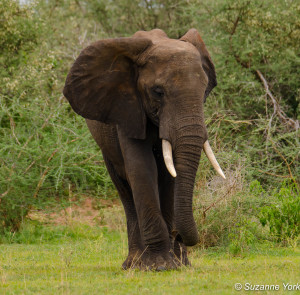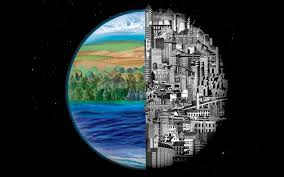Reversing Global Overshoot for a Healthy Planet
Jul 25th, 2018 | By admin | Category: Environment/SustainabilityBy Suzanne York.
As the planet is literally burning up, awareness of our greater human impact on the world may just be increasing. It does get more difficult to deny climate change as the daytime temperature records are broken in Scotland, Japan faces floods and then a heatwave and Yosemite National Park closes due to fire danger.
In addition to being hit over the head with signs of a warming planet, another clue is rising awareness of Global Overshoot Day. This is a day when we use up more of the Earth’s resources than it can replenish in a year. Unsurprisingly, this day is coming earlier and earlier with each passing year. Just twenty years ago, Overshoot Day fell on September 30th.
The Web of Life
Why should we care? It’s simple – humans are part of the web of life, and we destroy it to our own detriment. Our continual exploitation of nature – via an economic system predicated on unsustainable growth and consumption – simply cannot continue.
We are either currently in the midst of the world’s sixth mass extinction, or on the verge of it. Likely we are in it. According to the International Union for the Conservation of Nature (IUCN), more than 26,000 of the world’s species are now threatened.
Just since last year, six species have been declared extinct, raising this number to 872. Another 1,700 species are listed as critically endangered, possibly extinct.
Since the rise of “civilization,” 83 percent of wild animals have disappeared. Of all the mammals on Earth, 96% are livestock and humans, only 4% are wild mammals. Yet humans – all 7.6 billion of us – make up only 0.01% of Earth’s total biomass. Let that sink in for a moment.
On our watch, iconic species such as rhinos, orangutans, tigers and elephants could go extinct, as more and more wild areas are encroached upon for various human needs.
Craig Hilton-Taylor, head of the IUCN red list unit, told the Guardian, “This reinforces the theory that we are moving into a period when extinctions are taking place at a much higher pace than the natural background rate. We are endangering the life support systems of our planet and putting the future of our own species in jeopardy.”
He also said “This is our window of opportunity to act – we have the knowledge and tools on what needs to be done, but now need everyone, governments, private sector and civil society, to escalate actions to prevent the decline and loss of species.”
Solutions
The news is dire, and clearly if we don’t act soon our overshoot predicament will only get worse and worse. But there are solutions. Some are the individual actions we can take, such as eating less meat, taking transit, reducing consumption. But it’s the bigger actions we need to take that will change course for the better.
Nature Needs Half
Biologist E.O. Wilson and others support the idea of setting aside half of the planet as nature preserves. By preserving half of the planet, we can better protect the world’s species from extinction. Wilson’s half-Earth goal would not mean banning people from half of the planet’s land area (especially indigenous peoples, who are the best defenders of nature), but keeping these areas undeveloped. Per the Half Earth Project website, “Half-Earth is a call-to-action to conserve half of the land and sea for nature. If we conserve half our planet we can protect 85% of species and enter the safe zone.”
Others are calling for something similar, which would be a Paris-type Climate Accord for nature. The call went out last year in the journal BioScience:
We propose a Global Deal for Nature—a companion to the Paris Climate Deal—to promote increased habitat protection and restoration, national- and ecoregion-scale conservation strategies, and the empowerment of indigenous peoples to protect their sovereign lands. The goal of such an accord would be to protect half the terrestrial realm by 2050 to halt the extinction crisis while sustaining human livelihoods.
Rights of Nature
Rights of Nature is a paradigm-shifting concept grounded in indigenous views that reflects how people are part of the web of life, not above it, and certainly should cease exploiting natural resources at unsustainable rates.
Rights of Nature recognizes that:
- Nature in all its life forms has the right to exist, persist, maintain and regenerate its vital cycles;
- people have the legal authority and responsibility to enforce these rights on behalf of natural ecosystems;
- an ecosystem itself can be named as a rights bearing subject.
In New Zealand, for example, the Whanganui River became the first water system in the world to be recognized as a rights-bearing entity, holding legal “personhood” status. It is owned not by any government or person, but by the river itself.
See this article on other countries around the world that are implementing a game-changing rights of nature approach.
Global Footprint Network, which tracks Global Overshoot Day, has their own set of solutions, including redesigning cities, switching to renewable energy sources, changing our diets and how food is produced, and supporting women’s rights for a healthy population.Take Action – #MoveTheDate
Reversing overshoot will require big and small actions, by people, governments, and businesses. But ultimately, what is necessary is changing how we view and understand nature and our place on Earth.
To call for Nature Needs Half and support rights of nature, join the campaign #MoveTheDate to not only move back Overshoot Day, but put forth big solutions for people and the planet.
Suzanne York is Director of Transition Earth.



![Whanganui River, New Zealand [photo credit: Felix Engelhardt, Creative Commons]](http://populationgrowth.org/wp-content/uploads/2018/07/Whanganui_River_-_New_Zealand-300x225.jpg)